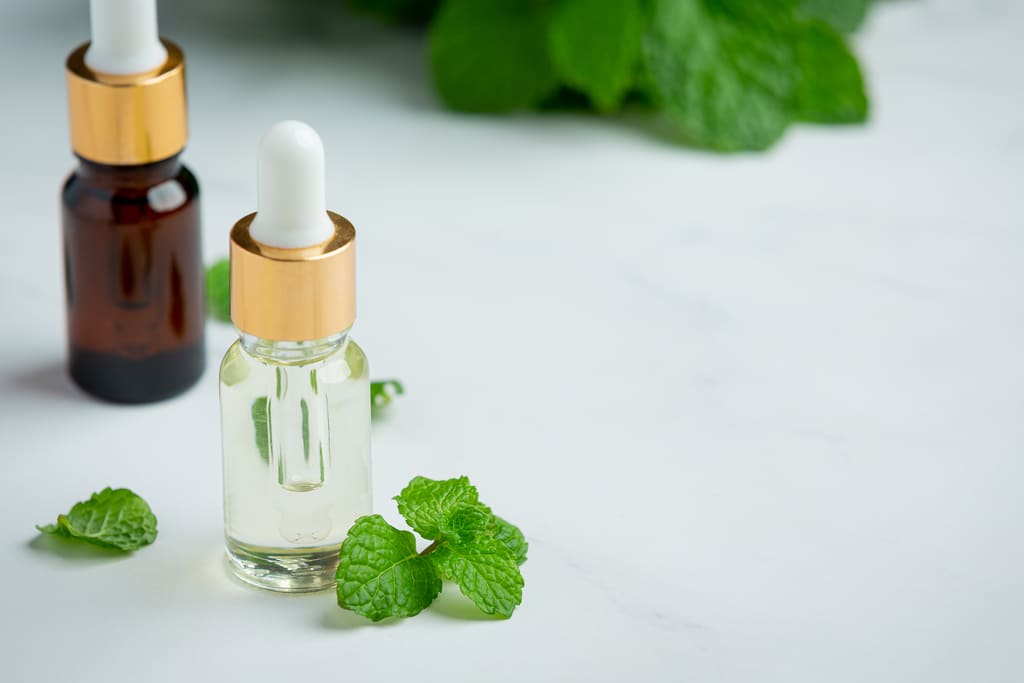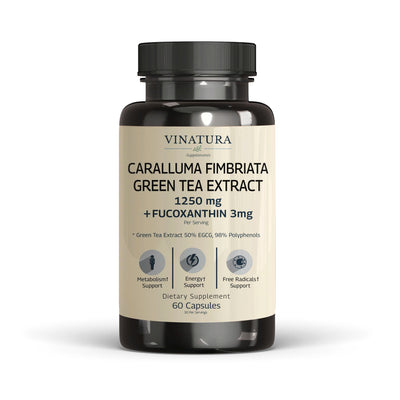
Benefits Of Spearmint On Skin: How To Use Spearmint For Acne?
Spearmint, known as Mentha spicata, has been a popular herb for centuries due to its various health benefits. It belongs to the mint family and has a refreshing aroma and cooling taste. Besides its culinary uses, Spearmint is also widely used in traditional medicine to treat various health issues. However, one of the lesser-known benefits of Spearmint is its effect on the skin. This article will discuss the benefits of spearmint on skin and how you can use it specifically for treating acne.
Before exploring further, please read the disclaimer located at the end of this webpage.
Mechanism Of Spearmint Benefits for Skin

One of the fundamental mechanisms behind the benefits of spearmint on skin lies in its anti-inflammatory, antioxidant, and antibacterial properties. These properties can help reduce inflammation, combat oxidative stress, and fight against harmful bacteria on the skin.
Learn more: Benefits of Spearmint for Anxiety & How to Use It
Anti-Inflammatory
Inflammation is the body's natural reaction to injury or infection. Nevertheless, persistent inflammation can give rise to an array of skin issues, including acne, eczema, psoriasis, and rosacea. Spearmint incorporates elements like carvone, limonene, and menthol, all of which possess anti-inflammatory characteristics. These elements can aid in diminishing skin inflammation and easing the symptoms of inflammatory skin conditions.
A study by Xuesheng Han and colleagues provided initial evidence of Spearmint's anti-inflammatory effects on the skin. Its mechanism is based on its ability to inhibit the increased production of pro-inflammatory biomarkers and exert a potent anti-proliferative effect on skin cells. Additionally, Spearmint also significantly impacts tissue regeneration and inflammation [1].
The specific anti-inflammatory mechanism, particularly concerning allergic dermatitis (AD), was confirmed through research in 2021. The study noted that MAEO (Mentha arvensis essential oil) inhibits the production of pro-inflammatory mediators induced by LPS, such as nitric oxide (NO) and prostaglandin E2, as well as pro-inflammatory cytokines. The conclusion was that MAEO has anti-inflammatory and anti-allergic dermatitis effects by inhibiting the ERK/NF-KB signaling pathway [3].
Another review article, which explored the properties of Spearmint, assessed the anti-inflammatory characteristics of Spearmint oil. The study reported that Spearmint oil inhibits the production of pro-inflammatory cytokines from macrophages [2].
Fighting Oxidative Stress

An imbalance between free radicals and antioxidants in the body causes oxidative stress. Free radicals are unstable molecules that can damage cells and lead to premature aging. Antioxidants, on the other hand, neutralize free radicals and prevent them from causing harm.
Spearmint is rich in antioxidants like rosmarinic acid, caffeic acid, and flavonoids that can fight against oxidative stress. These antioxidants can protect the skin from environmental pollutants and UV radiation, major contributors to premature aging.
The review also addressed Spearmint's antioxidant effects through mechanisms that slow down the generation of free radicals and reduce oxidative activity [2].
Spearmint oil contains compounds such as phenolics and flavonoids, which act as sources of hydrogen peroxide and reduce oxidative damage [2]. Its antibacterial properties are also highly beneficial for the skin in preventing bacterial invasion and undesired inflammatory conditions.
Combating Harmful Bacteria

Additionally, Spearmint possesses antibacterial qualities that aid in combating detrimental skin bacteria. This proves especially advantageous for individuals with skin prone to acne, as specific bacterial strains are recognized culprits for triggering breakouts. The constituents within Spearmint, such as menthol and limonene, have exhibited efficacy against bacteria, including Staphylococcus aureus and Escherichia coli.
In addition to these key mechanisms, Spearmint also has a cooling effect on the skin, making it soothing and refreshing when applied topically. It can also help improve blood circulation, which is essential for maintaining healthy skin.
Research on the antibacterial and antioxidant properties of Spearmint concluded that Spearmint oil has good antibacterial activity due to its high carvone concentration, making it suitable for use in the cosmetics and food industries [4].
Studies on the antibacterial properties of Spearmint and clary sage extracts also concurred that carvone is the antibacterial active component of Spearmint [5].
A pharmacological profile review of Spearmint highlighted a range of health benefits, such as liver protection and cancer prevention, and emphasized its anti-inflammatory, antioxidant, and antibacterial properties [6].
Anti-Androgen Properties and Hormonal Balance
Benefits of Spearmint on skin may be due to its anti-androgen properties, which can help address hormonal imbalances. These imbalances often contribute to the development of acne.
In a study conducted on patients with cystic acne, it was observed that many of them had elevated levels of androgens, particularly in women with higher levels of dehydroepiandrosterone sulfate, testosterone, and luteinizing hormone in their serum [7].
Many studies suggest that Spearmint may have anti-androgenic effects. A study involving 12 individuals consuming spearmint-infused herbal tea twice a day for five days showed a notable decrease in free testosterone levels, supporting the idea that Spearmint lowers testosterone effectively [8].
Additionally, another study conducted over a 30-day period on 42 patients found a significant reduction in free testosterone levels among those consuming spearmint tea [9].
These results indicated a clear impact on reducing androgen levels of Spearmint, thus offering potential benefits for skin conditions caused by hormonal imbalances.
Benefits Of Spearmint on Skin Health
Spearmint For Acne - Prone Skin

One of the key benefits of Spearmint for skin is its ability to help with acne-prone skin. Acne is a common skin condition that can be caused by hormonal imbalances, bacteria, excess oil production, and inflammation. Spearmint contains anti-inflammatory and antibacterial properties that can help combat these underlying causes of acne.
Research has shown that Spearmint can reduce inflammation in the body and also inhibit the growth of certain bacteria that contribute to acne breakouts. This makes it a natural and effective way to help manage acne-prone skin.
Spearmint For Soothing Irritated Skin
In addition to its anti-inflammatory properties, Spearmint also has a cooling effect that can help soothe irritated skin. This makes it particularly beneficial for those with sensitive or reactive skin types.
Spearmint contains menthol, which provides a cooling sensation when applied topically. This can help alleviate discomfort and redness caused by skin irritation or allergic reactions. Spearmint can also be used to calm sunburns, insect bites, and other minor skin irritations.
Spearmint Helps to Hydrate the Skin
Maintaining skin hydration is essential for preserving its overall health and aesthetic appeal. Skin that lacks moisture can present as dry and lackluster, and may even be more susceptible to the development of wrinkles and fine lines. Spearmint is rich in antioxidants, vitamins, and minerals, which play a crucial role in nourishing the skin from the inside.
When used topically, Spearmint can further assist in retaining skin moisture by creating a protective shield against environmental stressors. This property can be particularly advantageous for individuals with dry or aging skin.
Spearmint For Anti-Aging
One of the benefits of Spearmint for skin lies in its anti-aging attributes. As we grow older, our skin naturally experiences a loss of elasticity and firmness, resulting in the development of wrinkles and sagging. Spearmint is rich in antioxidants that can effectively counteract the aging signs by shielding the skin against damage caused by free radicals.
Free radicals are unstable molecules capable of inducing cellular damage and accelerating premature aging. Antioxidants, like the ones present in Spearmint, act to stabilize these harmful molecules and prevent them from harming the skin cells.
Furthermore, Spearmint can also improve skin elasticity, leading to a more youthful and radiant complexion. Its anti-inflammatory properties can also help reduce puffiness and dark circles under the eyes, making it an excellent ingredient for eye creams or serums.
How To Incorporate Spearmint into Your Skincare Routine?
There are several ways to incorporate Spearmint into your skincare routine. One option is spearmint tea, which can benefit your skin health. You can also use spearmint essential oil as a topical treatment by diluting a few drops with a carrier oil and applying it directly to the skin.
Another way to reap the benefits of Spearmint for your skin is by using skincare products that contain spearmint extract or oil. Look for cleansers, toners, moisturizers, and serums that include Spearmint in their ingredient list.
Spearmint Tea - Best Form For Spearmint Skin Benefits

Although Spearmint can be incorporated into your skincare routine through topical application, drinking spearmint tea is considered the most effective form for reaping its skin benefits. Drinking spearmint tea daily can help balance hormones, reduce inflammation and oxidative stress, and improve overall skin health. When comparing Peppermint differences with Spearmint tea, it's important to note that spearmint is particularly effective in hormonal balance, which enhances its benefits for the skin.
Furthermore, drinking spearmint tea is a natural and refreshing way to stay hydrated, which is essential for maintaining healthy skin. You can also add a few drops of Spearmint essential oil to your bath water for added skin benefits and a relaxing experience.
How To Use Spearmint Tea for Acne?
For best results, drinking 1-2 cups of spearmint tea daily is recommended. You can use fresh spearmint leaves or purchase pre-packaged tea bags from your local grocery store. To prepare spearmint tea, simply steep the leaves or tea bag in boiling water for 5-10 minutes before straining and enjoying.
Drinking Spearmint Tea
Additionally, you can use spearmint tea as a facial toner by cooling it in the refrigerator and then applying it to your face with a cotton pad. This can help reduce inflammation, shrink pores, and improve skin tone. You can also add a few drops of Spearmint essential oil to your toner for added benefits.
Spearmint Tea Face Mask For Glowing Skin
Another way to incorporate spearmint tea into your skincare routine is using it as a face mask. The antioxidants in Spearmint can help fight free radicals, which contribute to premature aging and dull-looking skin. Here's how you can make a simple and effective spearmint tea face mask:
- Brew 1 cup of spearmint tea and let it cool down.
- Mix two tablespoons of cooled spearmint tea, one tablespoon of honey, and one tablespoon of plain yogurt.
- Apply the mixture to your face, avoiding the eye area, and leave it on for 10-15 minutes.
- Rinse off with warm water and pat dry.
- Use this face mask once a week for glowing and rejuvenated skin.
Are There Any Adverse Effects Of Spearmint Tea?
Spearmint is generally regarded as safe, with few reported side effects. A 90-day study on dry spearmint extract in mice found no clinical signs or adverse effects [10].
Furthermore, Spearmint is recognized as a safe ingredient commonly used to add flavor to beverages, pharmaceuticals, and confectionery products [10].
While it is generally safe, it's important to note that individuals with digestive issues or those whose menstrual cycles might be affected by their dietary habits should limit their consumption of spearmint tea to no more than 2 cups per day.
Conclusion
While there are many benefits of spearmint on skin, it should not be mistaken as a complete or sole solution for acne elimination. Although some studies acknowledge its potential effectiveness, they also suggest the need for further research. To achieve better results of spearmint for acne and improving skincare, combining Spearmint with various other methods is advisable. Nevertheless, while it may not be a panacea for acne, Spearmint continues to gain positive recognition as a safer and more natural alternative to pharmacological or chemical cosmetic treatments.
Related Articles:
References
- 1. Han, L. (2017, August 7). Anti-Inflammatory Activity of Spearmint (Mentha spicata) Essential Oil in Human Dermal Fibroblasts. ResearchGate; unknown. https://www.researchgate.net/publication/333515422_Anti-Inflammatory_Activity_of_Spearmint_Mentha_spicata_Essential_Oil_in_Human_Dermal_Fibroblasts
- 2. Hejna, M., Kovanda, L., Rossi, L., & Liu, Y. (2021). Mint Oils: In Vitro Ability to Perform Anti-Inflammatory, Antioxidant, and Antimicrobial Activities and to Enhance Intestinal Barrier Integrity. Antioxidants, 10(7), 1004–1004. https://doi.org/10.3390/antiox10071004
- 3. Kim, S., Han, S.-D., Kim, M.-J., Tamanna Jahan Mony, Lee, E., Kim, K.-M., Choi, S., Sun Hee Hong, Ji Woong Choi, & Se Jin Park. (2021). Mentha arvensis Essential Oil Exerts Anti-Inflammatory in LPS-Stimulated Inflammatory Responses via Inhibition of ERK/NF-κB Signaling Pathway and Anti-Atopic Dermatitis-like Effects in 2,4-Dinitrochlorobezene-Induced BALB/c Mice. Antioxidants, 10(12), 1941–1941. https://doi.org/10.3390/antiox10121941
- 4. Scherer, R., Mayara Fumiere Lemos, Mariana Fumiere Lemos, Gésika Coimbra Martinelli, Lopes, D., & Silva. (2013). Antioxidant and antibacterial activities and composition of Brazilian spearmint (Mentha spicata L.). Industrial Crops and Products, 50, 408–413. https://doi.org/10.1016/j.indcrop.2013.07.007
- 5. Móricz, Á. M., Györgyi Horváth, & Ott, P. G. (2015). Direct bioautographic detection of antibacterial components of clary sage and spearmint essential oils. JPC – Journal of Planar Chromatography – Modern TLC, 28(2), 173–177. https://doi.org/10.1556/jpc.28.2015.2.15
- 6. G. Mahendran, Verma, S. K., & Laiq ur Rahman. (2021). The traditional uses, phytochemistry and pharmacology of spearmint (Mentha spicata L.): A review. Journal of Ethnopharmacology, 278, 114266–114266. https://doi.org/10.1016/j.jep.2021.114266
- 7. Marynick, S. P., Chakmakjian, Z. H., McCaffree, D. L., & Herndon, J. H. (1983). Androgen Excess in Cystic Acne. The New England Journal of Medicine, 308(17), 981–986. https://doi.org/10.1056/nejm198304283081701
- 8. Mehmet Akdoğan, Mehmet Numan Tamer, Erkan Cüre, Medine Cumhur Cüre, Banu Kale Köroğlu, & Namık Delibaş. (2007). Effect of spearmint (Mentha spicata Labiatae) teas on androgen levels in women with hirsutism. Phytotherapy Research, 21(5), 444–447. https://doi.org/10.1002/ptr.2074
- 9. Grant, P. (2009). Spearmint herbal tea has significant anti-androgen effects in polycystic ovarian syndrome. a randomized controlled trial. Phytotherapy Research, 24(2), 186–188. https://doi.org/10.1002/ptr.2900
- 10. Lasrado, J. A., Trinker, D., Ceddia, M. A., & Herrlinger, K. A. (2015). The safety of a dry spearmint extract in vitro and in vivo. Regulatory Toxicology and Pharmacology, 71(2), 213–224. https://doi.org/10.1016/j.yrtph.2014.12.007
Author

Product Disclaimer
Including an ingredient or study does not evaluate, endorse, or recommend any Vinatura product or any third-party product. Some ingredients discussed may not be used in any Vinatura product.
The content of the articles has not been evaluated by the Food and Drug Administration (FDA) and is not intended to promote or endorse any specific product. Any products sold on this website are not intended to diagnose, treat, cure, or prevent any disease.
Opinions and Endorsements
Any claims, statements, or opinions expressed in the articles are those of the author(s) and do not necessarily reflect the views or opinions of the manufacturers of the dietary supplement products. The products sold on this website are separate from the content of the articles and are not directly endorsed or associated with the information presented here.
Liability Disclaimer
The author(s) of the articles, website, and manufacturers of the dietary supplement products do not assume any liability for any potential consequences arising from the use of the information provided in the articles. Ingredient effects, dosages, and safety vary by individual, formulation, and context; some ingredients interact with medications or may be unsuitable during pregnancy or lactation. It is recommended that individuals consult with a qualified healthcare professional before making any dietary or lifestyle changes, including the use of dietary supplements.
Product Usage
Please refer to the product labels and packaging for specific usage instructions and guidelines for the dietary supplement products sold on this website.
Customer Support
For any concerns or questions regarding the dietary supplement products, please contact our customer support team, who will be more than happy to assist you.





Leave a Comment
Be the first to comment.
What do you think?